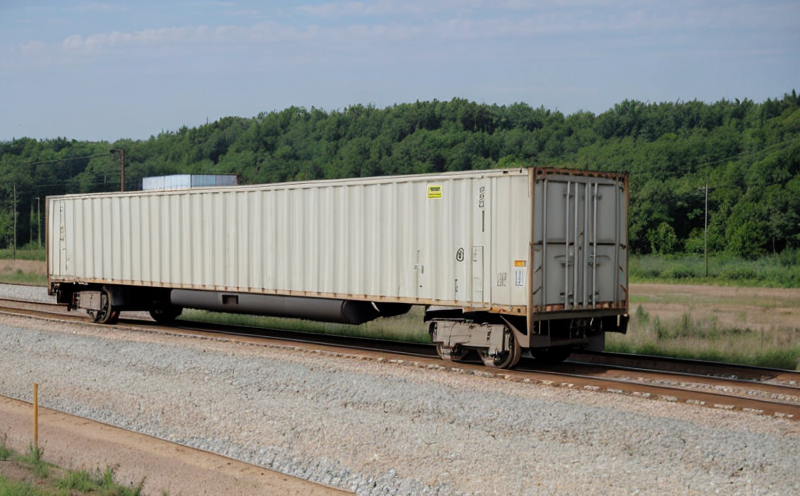EN 14363 Derailment Safety Testing of Freight Wagons
The European standard EN 14363 provides a set of requirements and test methods designed to assess the derailment safety of freight wagons. This service is critical for ensuring that railway vehicles meet stringent safety standards, especially in high-speed operations or challenging track conditions.
The primary goal of this testing is to evaluate how well a wagon can withstand forces that could cause it to derail, thereby preventing accidents and enhancing overall rail transport safety. The standard covers various aspects including structural integrity, dynamic behavior, and performance under critical loading scenarios.
Derailment testing typically involves placing the freight wagon on a special test rig capable of simulating real-world conditions such as uneven track surfaces or excessive speeds. During these tests, engineers monitor multiple parameters to ensure compliance with EN 14363 requirements. These include static and dynamic forces, wheel-rail interaction, structural deformation, and overall stability.
To prepare for testing, wagons undergo thorough inspection and necessary modifications if required based on preliminary assessments. This ensures that each wagon is in optimal condition before undergoing rigorous evaluation. Once prepared, the wagons are subjected to a series of tests aimed at identifying potential weaknesses or areas needing improvement.
The results from these tests provide valuable insights into the design strength and safety margins of individual wagons. Compliance with EN 14363 not only helps manufacturers meet regulatory requirements but also boosts customer confidence in their products' reliability and durability.
For quality managers, compliance officers, R&D engineers, and procurement professionals involved in railway and transportation projects, understanding the details behind such testing is crucial for making informed decisions about design changes or material selections. By leveraging this knowledge early in development stages, companies can significantly reduce risks associated with non-compliance later on.
Industry Applications
The EN 14363 derailment safety test finds application across multiple sectors within the railway and transportation industry:
- Railway operators: To ensure safe operation of their fleets under various track conditions.
- Rail manufacturers: For validating new designs against current standards before market release.
- Regulatory bodies: As part of regular inspections to maintain high safety standards across the network.
| Application Area | Description |
|---|---|
| Railway operators | Evaluating fleet performance on diverse tracks and weather conditions. |
| Rail manufacturers | Validating design robustness through realistic simulation of operational stresses. |
| Regulatory bodies | Implementing periodic checks to ensure continuous adherence to safety norms. |
The standard is particularly relevant for companies operating in Europe and other regions where this European Union directive applies. It plays a vital role in safeguarding public safety by preventing derailments which can lead to severe accidents resulting in loss of life or significant property damage.
Quality and Reliability Assurance
- Compliance verification: Ensuring that all aspects of a wagon's design adhere strictly to EN 14363 requirements. This includes structural components, suspension systems, braking mechanisms, etc.
- Data collection: Gathering detailed information on how each component behaves during simulated derailment events. This data helps in refining future designs and improving overall product quality.
Quality assurance in this context involves rigorous testing protocols designed to identify any flaws or weaknesses early in the production cycle. By doing so, manufacturers can implement corrective measures promptly without compromising on timelines or budgets.
The use of advanced instrumentation allows for precise measurement of critical parameters during tests, providing valuable feedback that can be used to enhance design iterations. Continuous improvement based on these insights ensures that products consistently meet high-quality standards set by industry leaders and regulatory authorities alike.
Environmental and Sustainability Contributions
The EN 14363 derailment safety test contributes positively towards environmental sustainability in several ways:
- Reducing accidents: By ensuring that wagons are safer, fewer incidents occur leading to lower emissions from rescue operations.
- Enhancing efficiency: Safer trains mean smoother operations with reduced downtime due to breakdowns or repairs following derailments.
- Supporting sustainable practices: Adherence to this standard promotes responsible manufacturing practices which contribute towards a greener future.
In summary, the implementation of EN 14363 not only enhances safety but also supports broader goals related to sustainability and environmental responsibility within the railway sector.





